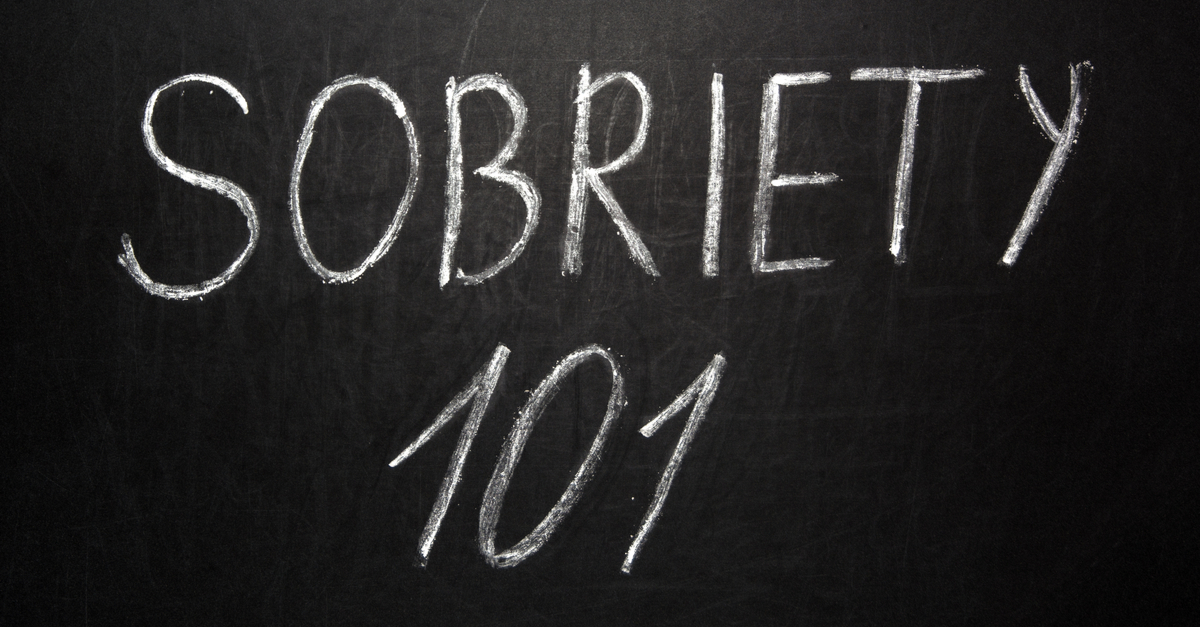 Dr. David Fawcett
Dr. David Fawcett
Sobriety for sexualized drug use (chemsex) can be confusing. In fact, in the early days of recovery, many substance/sex addicts have no idea what sobriety should look like. Is it the same as straight-up drug abuse sobriety, where total abstinence is the goal? Or is it the same as sex/porn addiction sobriety, where the goal (as we also see with eating disorders) is to step away from the unhealthy parts of a behavior, while learning to engage in healthier parts of that behavior in non-compulsive, non-addictive, life-affirming ways?
With sexualized drug use, the answer is actually a combination of the two approaches outlined above. The substance abuse half of the addiction requires long-term total abstinence. The sexual half of the addiction requires an approach that will vary from addict to addict depending on his or her history, addiction-related consequences, and goals for recovery and life. Thus, some sexual behaviors will need to be abstained from long-term, while others may be acceptable right now, or may become so as the process of recovery and healing takes root.
In all cases, I recommend a period of total abstinence from not only alcohol and drugs but all sexual behaviors, including masturbation. Usually this timeout lasts 30, 60, or 90 days. This brief period of total abstinence from all substance and sex behavior is suggested because most newly recovering chemsex addicts have lost touch with the real impact of their problematic substance/sex behaviors and therefore need to separate themselves from all substance/sex behaviors to establish clarity about what actions are and are not creating problems for them and the people they care about.
Chemsex addicts should also use this time away from both substances and sex to examine and dismantle their denial (the lies they tell themselves to make their behavior seem OK), to learn what their triggers toward substance/sex addiction are, to develop some healthy coping skills they can use when triggered toward relapse, and to develop a support network that can help them stay sober and live a better life. In short, this time away from all substance use and sexual behaviors interrupts long-established patterns so clarity, ego-strength, social skills, support networks, and new coping skills can be developed.
This is not, however, a long-term approach. In truth, the heavy lifting of chemsex recovery is not this initial period of self-restraint, it’s the slow (re)introduction of healthy sexual behaviors – sex and intimacy without the crutch of substance abuse – into the addict’s life. So the true goal of substance/sex recovery and the true definition of substance/sex sobriety is not permanent abstinence from both drugs and sex; it’s learning to meet one’s emotional, physical, and sexual needs without engaging in drug use or problematic sexual activity. And when I say problematic, I mean problematic for that individual.
Crafting a Long-Term Plan for Substance/Sex Sobriety
Every substance/sex addict arrives in recovery with a unique set of problems, a unique personal history, and unique goals for sobriety and life. Thus, there is no automatic, cut-and-dried definition of sobriety that such addicts can turn to. Instead, each addict, with help from his or her therapist, 12-step sponsor, and accountability partners, must craft a personalized definition of and plan for sobriety. This plan must consider the addict’s values, beliefs, circumstances, and goals. Based on those factors, the addict can then create a boundary or circle plan that delineates problematic (non-sober) behaviors, slippery behaviors (sober behaviors that might lead the addict into relapse), and healthy behaviors (behaviors the addict can turn to instead of the addiction).
Needless to say, every recovering chemsex addict’s boundary/circle plan will look different. The goal of these plans is not conformity, it’s living life in non-compulsive, non-shaming, non-secretive, non-problem-causing ways.
It is important that these plans be created, put in writing, and signed and dated like a contract. There is something about that process that makes them official and concrete in a way that “thought” plans are not.
To get started, substance/sex addicts should first list their goals for recovery – the primary reasons the addict wants to change his or her behavior not just in the moment but long-term. Commonly stated goals for substance/sex addicts include:
- I want to be present in the real world instead of living my life in a fog.
- I want to develop lasting intimate relationships, rather than fleeting drug/sex relationships.
- I don’t want to break the law anymore.
- I want to improve my physical and emotional health.
- I want to stop living a double-life filled with secrets, lies, and compartmentalization.
When the addict is clear about his or her goals for sobriety, a three-tiered circle plan can be created.
The Inner (Red) Circle: This is the addict’s bottom-line definition of addictive behavior. Here the addict lists specific behaviors (not thoughts or fantasies) that are causing problems in his or her life and that he or she therefore needs to stop. In other words, this circle lists the damaging and troublesome acts that have created negative life consequences and incomprehensible demoralization for the addict. If the addict engages in any red circle behavior, he or she has “slipped” and will need to reset his or her sobriety clock (while also doing a thorough examination of what lead to the slip). For substance/sex addicts, alcohol and drug use are always listed in the red circle. Commonly stated red circle behaviors for substance/sex addicts include:
- Consuming alcohol
- Using drugs
- Anonymous sex
- Group sex
- Unprotected sex with anyone other than my partner
The Middle (Yellow) Circle: This circle lists warning signs and slippery situations that might lead a substance/sex addict back to red circle behaviors. Here the addict lists the people, places, thoughts/fantasies, events, and experiences that might trigger relapse. Commonly stated yellow circle behaviors for substance/sex addicts include:
- Lying or keeping secrets (about anything)
- Poor self-care (lack of sleep, eating poorly, forgoing exercise, etc.)
- Fighting or arguing (with anyone, but especially with loved ones)
- Unstructured time alone
- Feeling lonely, bored, stressed out, depressed, etc.
- Going on an app such as Grindr or Tinder
The Outer (Green) Circle: This circle lists healthy behaviors and activities that can and hopefully will lead a substance/sex addict toward his or her life goals – including but not even remotely limited to having an enjoyable sex life. These healthy pleasures are what the addict can turn to as a replacement for the addiction. Green circle activities may be immediate and concrete, such as “working on my house,” or long-term and less tangible, such as “redefining my career goals.” In all cases, the list should reflect a healthy combination of work, recovery, and play. Commonly stated green circle behaviors for substance/sex addicts include:
- Actively participate in therapy and 12-Step recovery
- Rekindle an old hobby (or develop a new one)
- Engage in self-care (exercise, regular sleep, healthy eating, time with friends)
- Go back to school so I can change or advance in my career
- Develop a spiritual connection of some sort
At this point, it is important for me to state that substance/sex circle plans are concerned with much more than simply staying away from problematic, non-sober behaviors. Certainly, that is the obvious and ultimate goal, but there is much more to the process of healing. In the long-run, recovery is more about living in the green circle than staying away from the red circle. No addict recovers and heals from addiction simply by not doing certain things. The flip side is equally important. The more positive things an addict does to feel good about himself or herself, the better off the addict will be.
